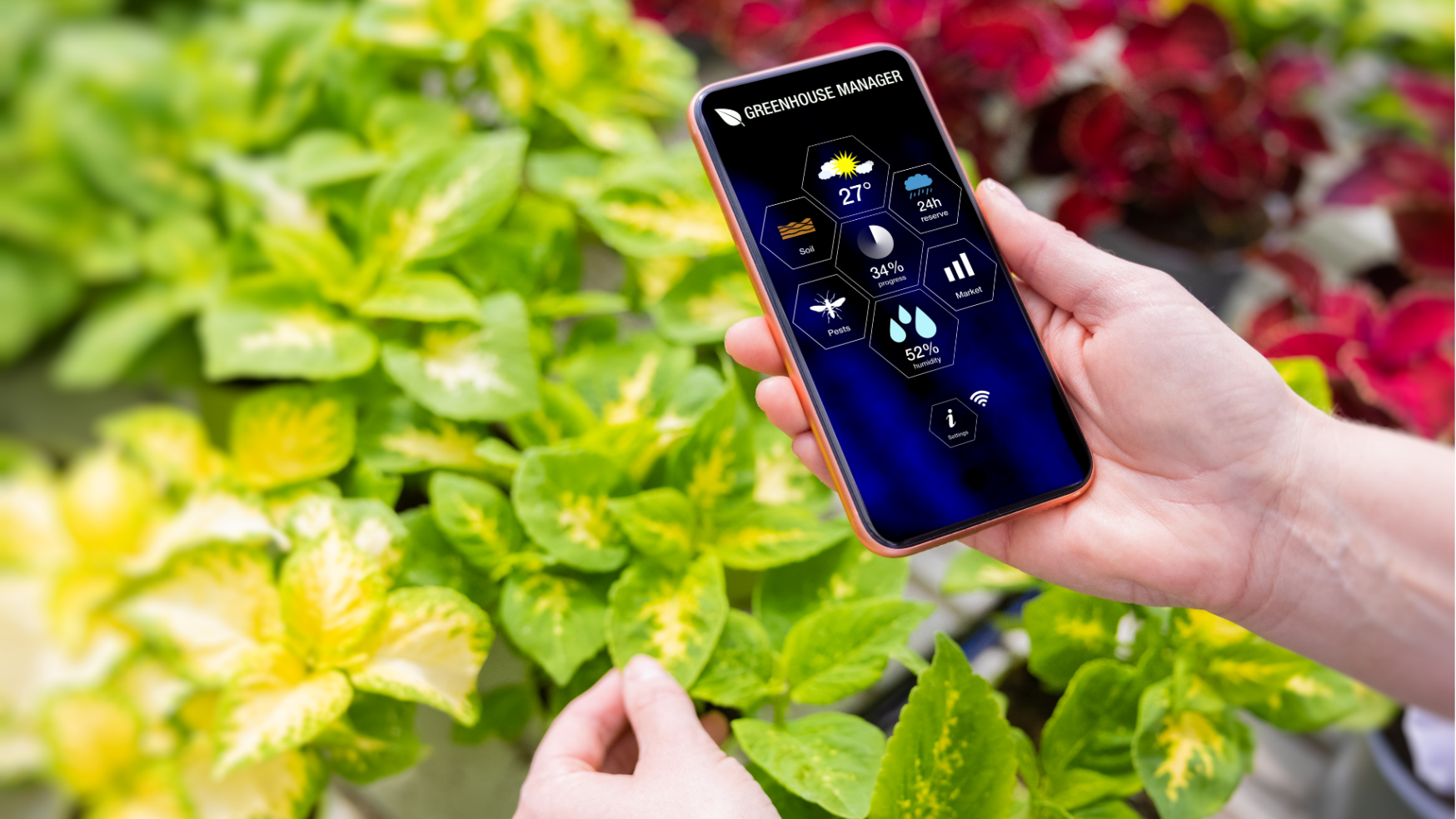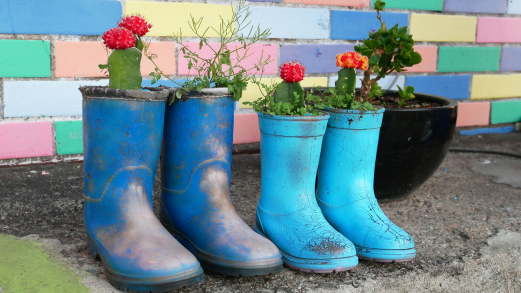The vegetable garden is a flop, the drought tolerant plants turned up toes as soon as the summer rain came so I planted plants that like water, and my husband ripped out my favourite native shrub because it had thorns. It sounds like exactly the opposite of sustainable gardening doesn’t it?
If my garden doesn’t exactly fit the mould, what claims can I make to being a sustainable gardener?
Kate Wall tells us about her gardening journey, revealing to us that there is more than one way of creating a sustainable garden.
Sustainability looks different in each garden. Overall it is about reducing the environmental footprint of our gardening activities. The means of achieving this are as diverse as are the gardens themselves. I don’t strive for best practice, nor do I encourage best practice from my clients. When it comes to true sustainability, best practice is a big ask. Instead, I look for steps in the right direction.
Actually, in spite of my background in environmental biology, I did not set out to be a sustainable gardener. Probably because I assumed that by being a gardener I was already doing a good thing – growing plants is good for the environment right? Surely that is enough?
Back when I was a uni student, decades ago, we were young and eager. We believed that lawns were bad for the environment, and natives were good. We spent hours in the bush poisoning weeds that seemed to grow back faster than we could kill them.
I ended up with a garden that was full of natives, had no lawn and was ugly and unusable. I threw my eco views to the wind and decided it was time to create a garden I could love. I planted common things that looked beautiful and were hardy, I pulled out thorny and unattractive natives and put in a small lawn. The pumpkin patch gave way to lawn and the failing vegetable garden gave way to yet more salvias.
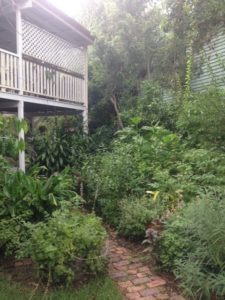 The outcome is a garden which ticks many sustainability boxes, even if they are not the obvious ones. Many of the choices I made were driven by lack of budget or lack of time, but the end result was sustainable. Overall the garden has low resource use which is a big sustainability tick. It does get watered but not regularly and mostly by rainwater or greywater, chemicals and fertilisers are very rarely used –even the organic ones, most of the materials used are reused or repurposed, plants are mostly sourced locally, and are climate suitable, it features some natives and some edibles, it has trees and green spaces which cool the home and provide some storm protection, very little stormwater leaves the site, it has very little green waste leaving the site, with most being composted in the garden or in the chook pen and it is teaming with life, from the very tiny to the furry fruit stealing varieties!
The outcome is a garden which ticks many sustainability boxes, even if they are not the obvious ones. Many of the choices I made were driven by lack of budget or lack of time, but the end result was sustainable. Overall the garden has low resource use which is a big sustainability tick. It does get watered but not regularly and mostly by rainwater or greywater, chemicals and fertilisers are very rarely used –even the organic ones, most of the materials used are reused or repurposed, plants are mostly sourced locally, and are climate suitable, it features some natives and some edibles, it has trees and green spaces which cool the home and provide some storm protection, very little stormwater leaves the site, it has very little green waste leaving the site, with most being composted in the garden or in the chook pen and it is teaming with life, from the very tiny to the furry fruit stealing varieties!
The garden has been designed as a purely ornamental garden. That aim has been achieved – it is a beautiful place to be, and gives me immense joy. While putting in a simple grey water system was very deliberate, many of the other sustainability features were more accidental.
I have always been passionate about caring for the soil, so composting and mulching were just part of gardening to me. I am a mad plant person, so having a biologically diverse garden was driven not by a desire for diversity but by a desire for a flower I didn’t already have. Sourcing locally was easy – sharing cuttings and swapping plants with local gardeners makes good economic sense as well as giving access to plants not found in nurseries. This also led to climate appropriate plants – things that were growing in nearby gardens and did well in our conditions. Climate appropriate plants tend to need less care so that is a huge bonus not just for sustainability, but also for time-poor me.
The garden features reused materials in abundance – from rock edging to decorative gravel, to large pots, gates, garden ornaments and even some of the plants – all unwanted somewhere else, and found a new lease on life in my garden. Even the cubby was made entirely out of cast off materials.
Lack of time meant that I was not busy watering, or spraying pests. Plants had to cope or not with whatever came at them.
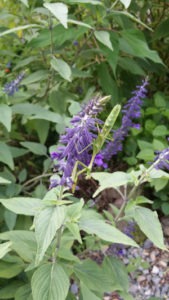
Over time I realised that I had actually created a very ecological garden. It has a very complex interplay between plants creating microclimates which supported each other. Things were planted to cope in the wet spots, or the dry spots, or the shady spots or sunny spots, and this allowed dense plantings into every nook and cranny – much the way nature does. By filling these spots, there was no room for weeds. By letting the plants fully fill the spaces, the garden is dense, lush and beautiful without needing regular mulching as the soil is shaded and covered by natural leaf drop.
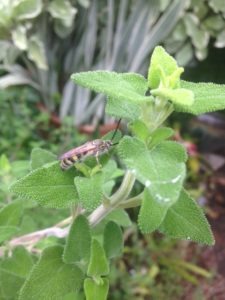
Being mad about flowers, I have always grown as many as I could, with the benefit of bringing in the pollinators and the good bugs. These days 90% of the pest control in the garden has no input from me. Sure there are a few holes in some leaves, but I get the joy of a garden teaming with butterflies, and our son gets the joy of discovering all sorts of interesting insects in the garden.
I believe that sustainable gardening is not a “one size fits all” sport. It is an exercise in increasing awareness of our natural world, and with that increased awareness comes joy, appreciation and an ever increasing desire to always go one step further. And so the journey begins….
Related Articles:
Citizen Science: A Pathway to Gardening Success and Biodiversity Conservation
In recent years, the realm of science has experienced a remarkable transformation, one that invites people from all walks of life to participate…
A Sustainable Gardener’s Guide to Thrifty Gardening
Creating an eco-friendly and cost-effective garden involves more than just nurturing plants; it's about adopting a sustainable approach that…


